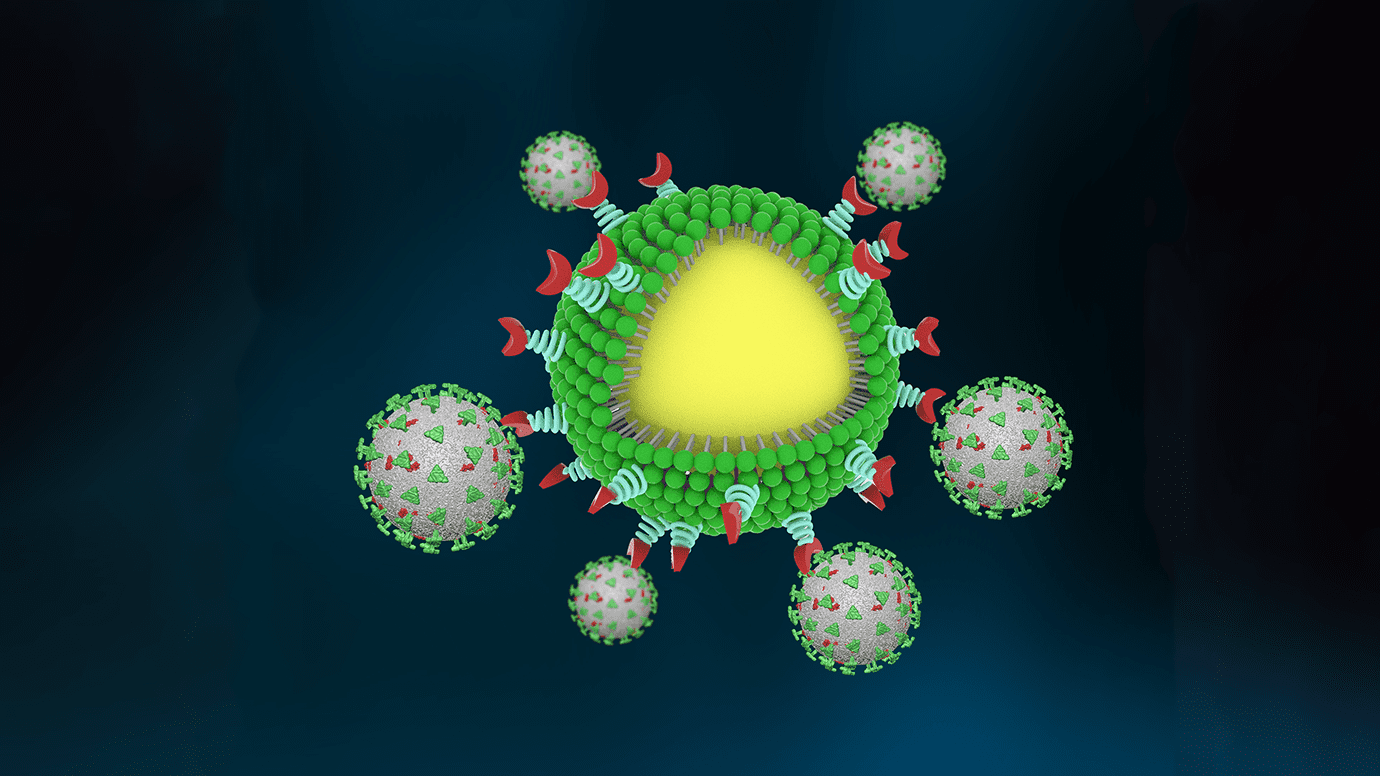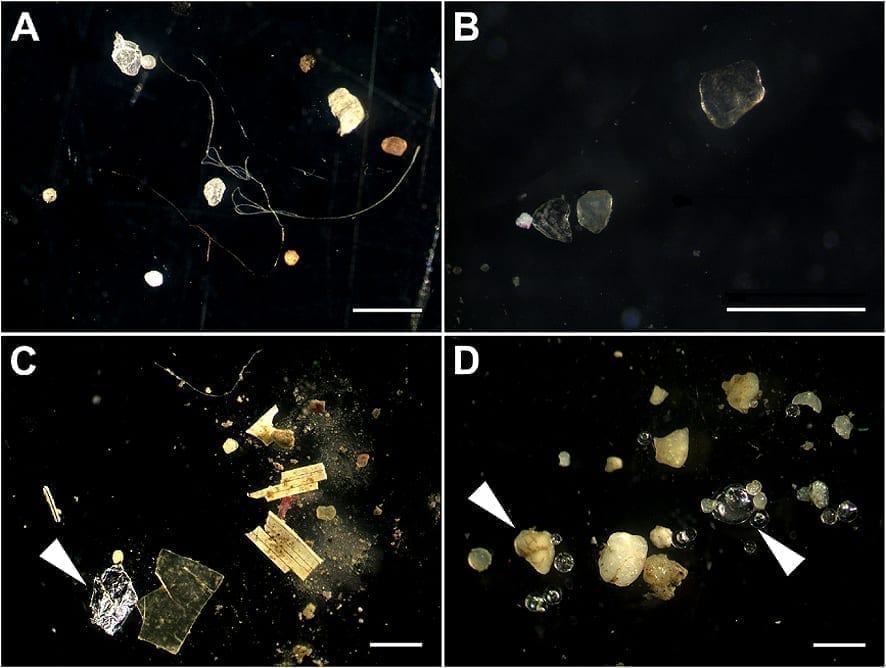
An artist’s concept of the nanotrap in action. The nanotrap is shown with a yellow core, green phospholipid shell, and red functionalized particles to bind the virus (shown in gray, decorated with their infamous spike protein in green).
Image courtesy Chen and Rosenberg et al.
Made of FDA-approved polymers and phospholipids, the nanoparticles are about 500 nanometers in diameter—much smaller than a cell. That means the nanotraps can reach more areas inside the body and more effectively trap the virus.
Then, to check to make sure the tiny particles looked the way they expected, they partnered with the lab of Assoc. Prof. Bozhi Tian to use electron microscopes to get a good look. “From our imaging, we saw a solid core and a lipid bilayer shell. That’s the essential part because it mimics the cell,” said Tian, who is appointed in the Department of Chemistry.
The researchers tested the safety of the system in a mouse model and found no toxicity. They then tested the nanotraps against a pseudovirus—a less potent model of a virus that doesn’t replicate—in human lung cells in tissue culture plates and found that they completely blocked entry into the cells.
Once the pseudovirus bound itself to the nanoparticle—which in tests took about 10 minutes after injection—the nanoparticles used a molecule that calls the body’s macrophages to engulf and degrade the nanotrap. Macrophages will generally eat nanoparticles within the body, but the nanotrap molecule speeds up the process. The nanoparticles were cleared and degraded within 48 hours.
The researchers also tested the nanoparticles with a pseudovirus in an ex vivo lung perfusion system—a pair of donated lungs that is kept alive with a ventilator—and found that they completely blocked infection in the lungs.
They also collaborated with researchers at Argonne National Laboratory to test the nanotraps with a live virus (rather than a pseudovirus) in an in vitro system. They found that their system inhibited the virus 10 times better than neutralizing antibodies or soluble ACE2 alone.
A potential future treatment for COVID-19 and beyond
Next the researchers hope to further test the system, including more tests with a live virus and on the many virus variants.
“That’s what is so powerful about this nanotrap,” Rosenberg said. “It’s easily modulated. We can switch out different antibodies or proteins or target different immune cells, based on what we need with new variants.”
The nanotraps can be stored in a standard freezer and could ultimately be given via an intranasal spray, which would place them directly in the respiratory system and make them most effective.
The nanotraps can be stored in a standard freezer and could ultimately be given via an intranasal spray.
The researchers say it is also possible to serve as a vaccine by optimizing the formulation.
“This nanomaterial engineering approach provides a versatile platform to clear viruses, and paves the way for designing next-generation vaccines and therapeutics,” said co-author and graduate student Jiuyun Shi.
“This is the starting point,” Huang said. “We want to do something to help the world.”
Original Article: UChicago scientists design ‘nanotraps’ to catch and clear coronavirus from tissue
More from: University of Chicago | Argonne National Laboratory
The Latest Updates from Bing News & Google News
Go deeper with Bing News on:
Nanotraps capture SARS-CoV-2
- Identifying efficacious SARS-CoV-2 antivirals in a changing immune landscape
With almost 775 million COVID-19 cases reported worldwide and 67% of the global population vaccinated with a complete primary series of a COVID-19 vaccine, the deadly pace of the pandemic has slowed ...
- New tARC-seq method enhances precision in tracking SARS-CoV-2 mutations
The study highlighted tARC-seq, a specialized sequencing approach, to investigate the replication mistakes that influence SARS-CoV-2 divergence. This approach selectively reads specific RNA molecules ...
- Study reveals how SARS-CoV-2 hijacks lung cells to drive COVID-19 severity
Researchers identified how SARS-CoV-2 targets and manipulates specific lung cells, using innovative techniques to trace the virus's impact on the cells' gene expression, revealing insights into early ...
Go deeper with Google Headlines on:
Nanotraps capture SARS-CoV-2
[google_news title=”” keyword=”nanotraps capture SARS-CoV-2″ num_posts=”5″ blurb_length=”0″ show_thumb=”left”]
Go deeper with Bing News on:
Nanotraps
- Feed has no items.
Go deeper with Google Headlines on:
Nanotraps
[google_news title=”” keyword=”nanotraps” num_posts=”5″ blurb_length=”0″ show_thumb=”left”]










